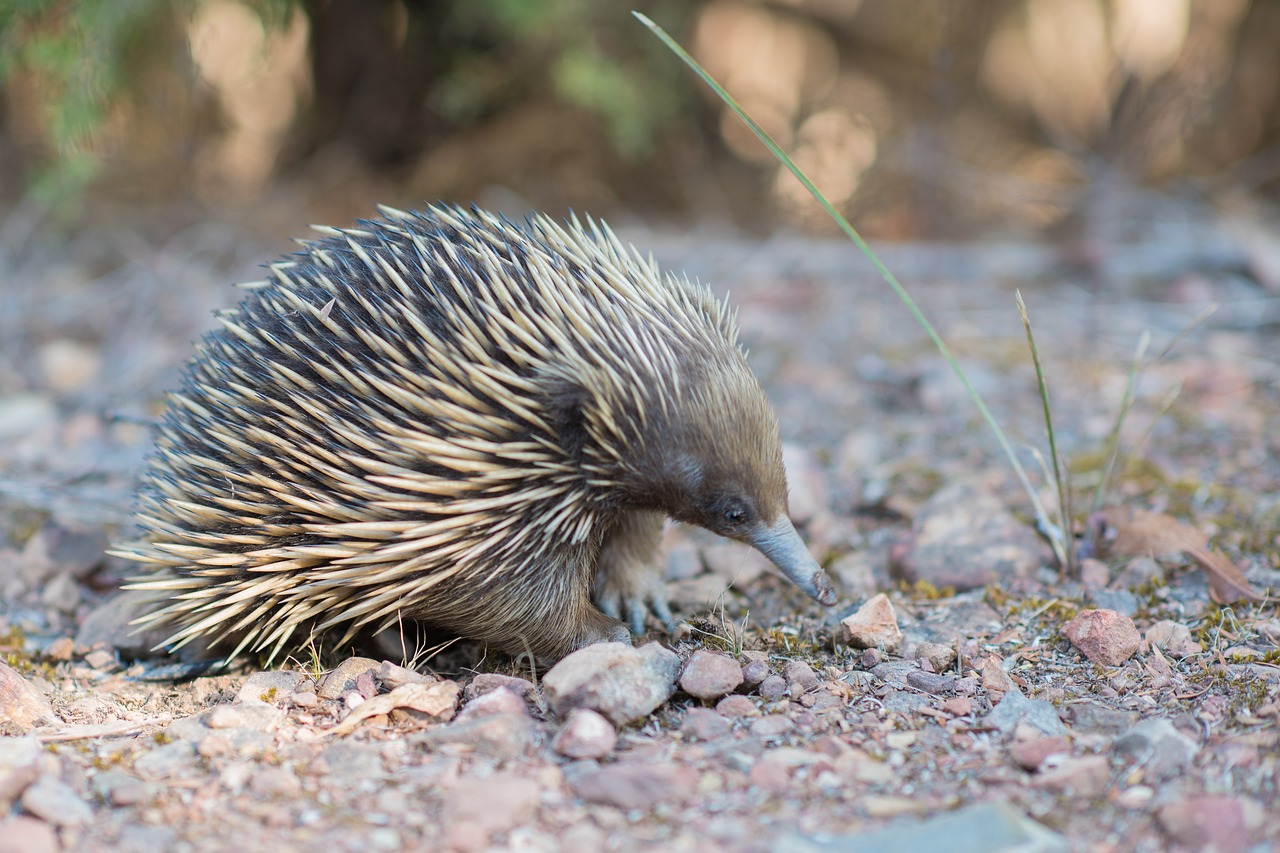An expedition team comprising of University of Oxford and many other teams from Indonesia boast the successful rediscovery of an egg-laying mammal after nearly sixty years. Let’s look at the journey of the expedition in detail.
The expedition team rediscovers the egg-laying mammal in a remote Cyclops mountain in Indonesia. these mountains are located in an island just north of Australia. The team names it Attenborough’s long-beaked echidna and was able to capture it through photos and videos.
In addition to the discovery of echidna, they discover countless other insect species, a new genus of shrimp that lives on trees, honeyeater ( last found in 2008), and a new cave system. Despite hostile conditions like the terrain, snakes, leeches, diseases, earthquakes, and heat, the expedition was a success.
Previously known egg-laying mammal
Before coming to the rediscovered egg-laying mammal, let’s look at yet another egg-laying mammal- the duck-billed platypus. Both echidnas and platypus are known to have once dominated Australia before the marsupials (their pouched cousins) invaded their land and swept them away. But, they still managed to survive thanks to their ancestors who took to the water. It was the only place where the marsupials could not reach. But, echidnas had a slight disadvantage as they were completely landbound. Let’s look at thier survival story and how they found them sixty years later in a completely unexpected location.
Unveiling echidnas as nature’s marvel
It was last recorded in 1961. It is a distant group of egg-laying mammals and includes the platypus. It is very special as only five species of echidnas remain and they solely guard the particular branch of the tree of life.
What makes echidnas elusive
They are nocturnal and introverted creatures who live in burrows. They were never seen outside the Cyclops Mountains in Indonesia and are currently one of the most critically endangered species according to the IUCN Red List.
Mission: Finding echidnas
Because of their nocturnal and burrowing nature, many cameras require placements in different locations to capture photos and videos of them. This expedition was daunting as they had to climb over 11000 meters up the mountain ranges. The entire expedition took place for over four weeks and none of the cameras showed any sign of the echidna. It was only on the last day did one of the cameras captured the animal and they named it the Attenborough’s echidna. This successful discovery took over three years of planning and the team attributed this success to YAPPENDA, specifically the village of yaongsu sapari.
Extraordinary finds from the expedition
Attenborough’s long-beaked echidna
They resemble a hedgehog because of its spines and an anteater because of its snouts. They also resemble a mole because of its feet. Due to its hybrid appearance, the creature shares its name with a Greek creature which is half human and half serpent. It doesn’t look like a mammal as they split into a separate group called monotremes during evolution around 200 million years ago.
Mayr’s honeyeater (Ptiloprora mayri)
Thanks to the combination of experienced team members and the knowledge of the forest people, they were able to make discoveries in addition to the echidnas and this included the rediscovery of Mayr’s honeyeater (last found in 2008). Ongoing and future research can give us insights into its conservation status.
Tree dwelling shrimp
The most surprising one was the tree-dwelling shrimp. The expedition team got a surprise when they could spot a shrimp (a purely aquatic organism) in the middle of the forest. The team lead of the expedition Dr Leonidas-Romanos Davranoglou suspects the heavy rainfall in the Cyclops mountains suggests a humidity high enough for such creatures to survive entirely on land. The shrimp uses its handles to take long jumps to escape from predators. It carries its eggs in pockets throughout its body.
New-to-science insects
The expedition team also found a hidden treasure consisting of underground species like blind spiders, harvestmen, and scorpions. The particular cave system in itself was previously unexplored. They were spotted in the Yongsu Sapari peak, a mountainous region where they were given special permission to research. The insects are crucial bio-indicators (animals that indicate the overall health of the environment). Research on them is important to understand the ecology of a rainforest. These species of insects will also help us identify how the fauna of Cyclops Mountain originated.
A new frog
A new species of frog never known to science was seen in the Cyclops mountains. They belong to the species Choerophryne. It exhibits a characteristic high-pitched screeching sound. Its distinctive nose shape made the expedition team name it the goblin-nosed frog.
This was just a fraction of the material and over the next few months, we can expect a lot more yields in the form of new species.
The hidden challenges behind these discoveries
The discovery of these hidden gems took place under extremely challenging and life-threatening conditions. The expedition team had to hurdle through an earthquake which forced them to evacuate. This also resulted in injuries, ailments, and diseases in the form of fractures, malaria, and leech bites. The team was in constant fear of venomous snakes, spiders, and ticks and they had to ensure a slow and cautious trek through the jungle.
The beauty behind the dangers
As some might call the Cyclops mountain as “green hell”, it was not quite, according to one team member. Dr. Kempton felt the place was magical and enchanting at the same time slightly dangerous. The unity among team members made this a wonderful expedition by helping keep up each other’s morale.
What next?
Rediscovering echidna is just the beginning. It is a flagship species and represents its extraordinary diversity. This rediscovery will throw some light on the conservation of these species at Cyclops and Indonesian New Guinea.
Not just animals- rocks and more
Besides studying animals, the expedition team has also collected rocks to perform a geological analysis. This study was led by the chief geologist of the team, Max Webb from London. This could give us an idea of when the Cyclops mountain was formed. They believe that this island was formed nearly 10 million years ago when an island in the Pacific Ocean collided with the mainland of New Guinea
To read more about the status of the expedition, check out their expedition page https://www.expeditioncyclops.org/


Thanks for sharing!